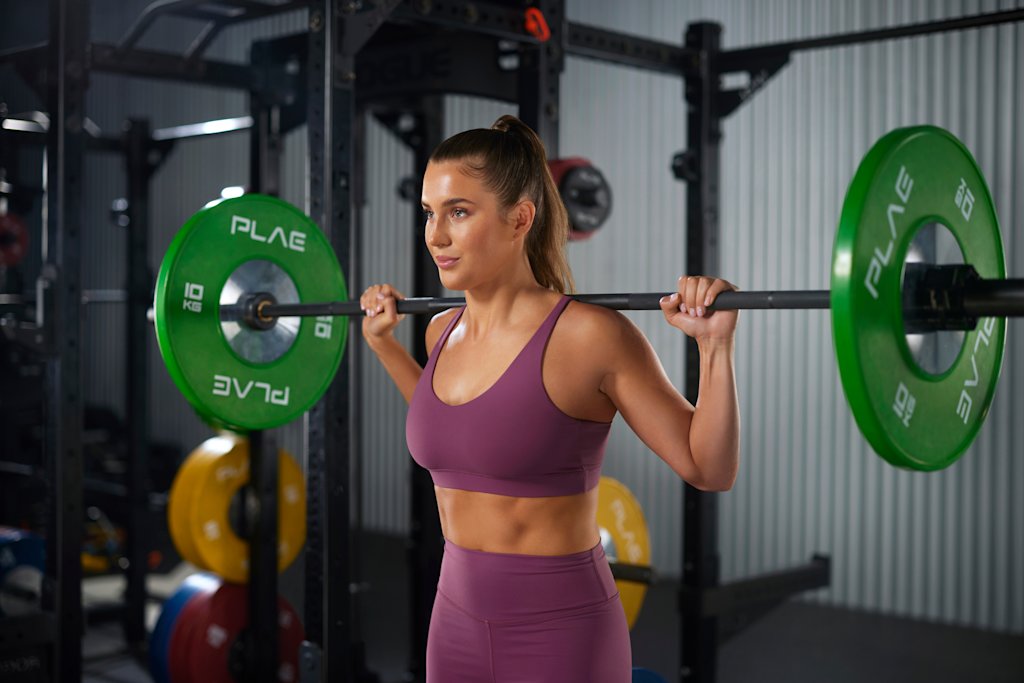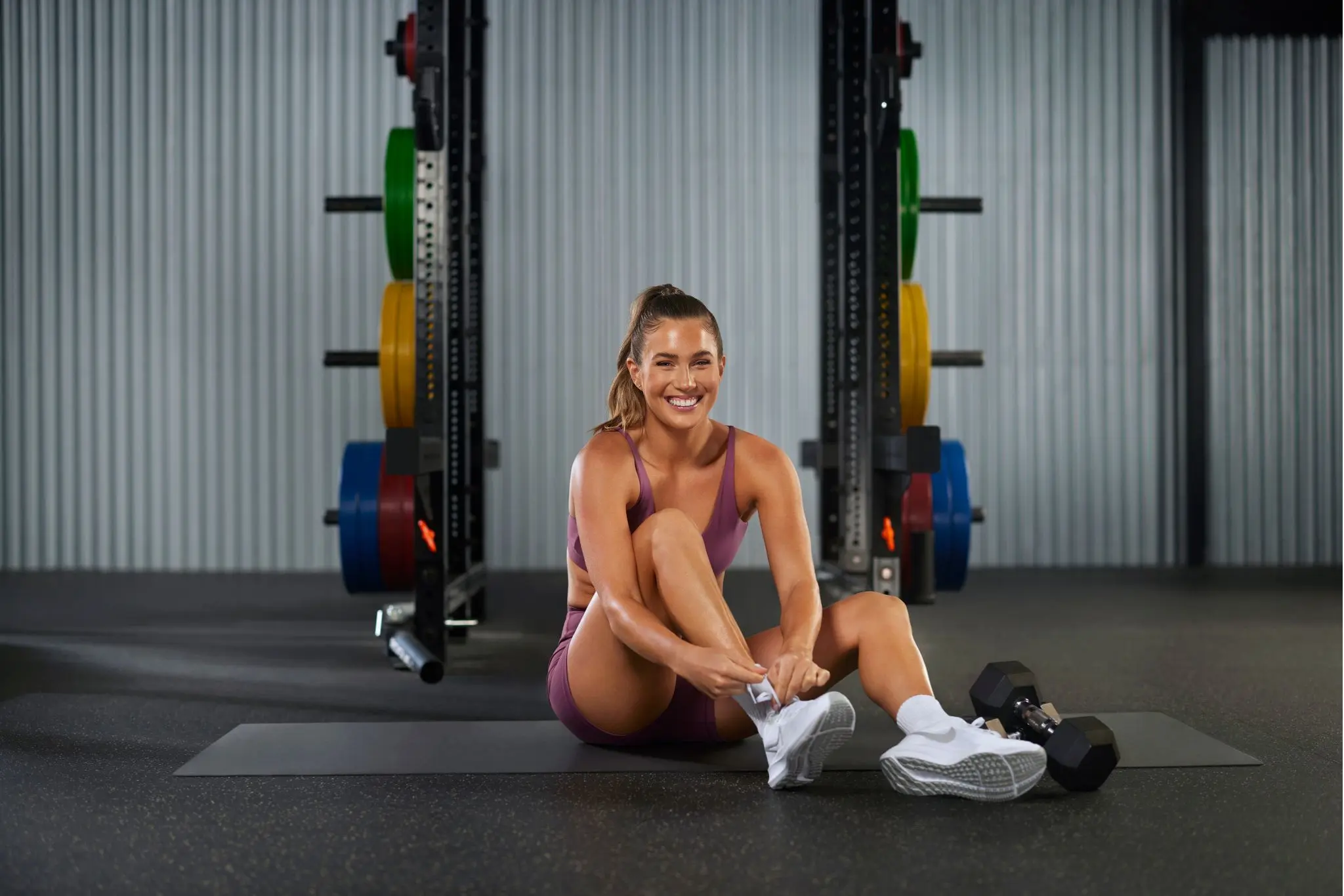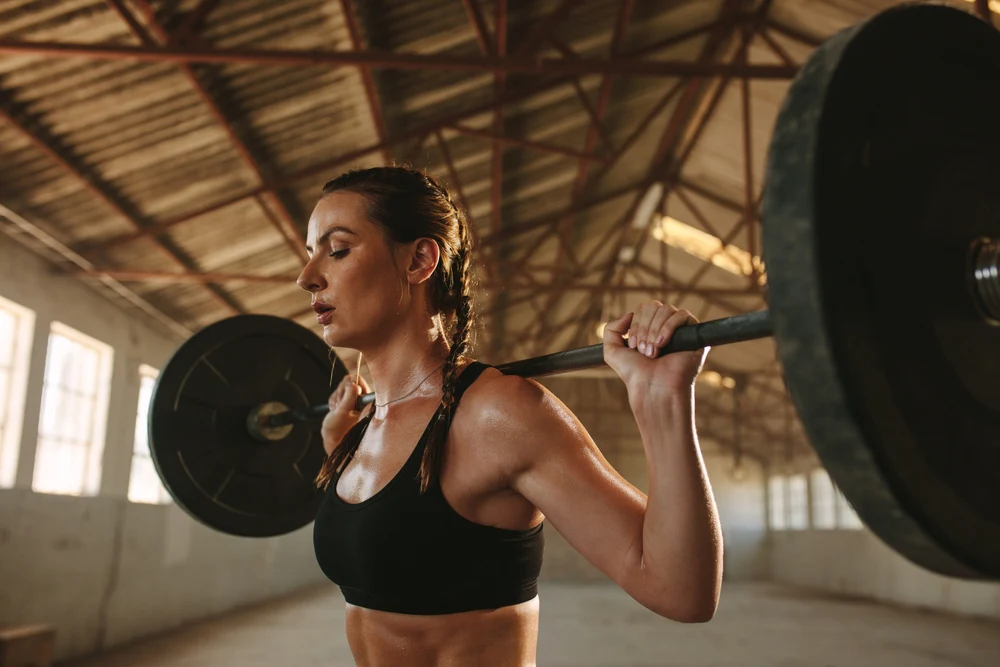Sets, Rest & Rest: Everything You Need To Know

September 1, 2022 - Updated November 11, 2025

When you start a new fitness program or set new training goals, it’s common to ask which exercises you should do, but just as important is knowing how to structure your workout. That’s where sets, reps and rest come in.
These three simple terms are the foundation of every strength training workout, and they’re built into all Sweat programs. Here’s everything you need to know.
What are reps?
Reps (short for repetitions) refer to how many times you perform an exercise before resting. For example, if you do 12 squats in a row, that’s 12 reps.
High, medium and low reps explained
Here is a general guide to rep ranges:
High reps: 15+
Medium reps: 6-12
Low reps: 1-5
These are guidelines, not strict rules — your ideal rep range depends on your goals, experience and the weight you’re lifting.
What are sets?
Completing several reps or repetitions of an exercise in a row is called a set. If you complete 12 squats before you rest, that would be one set. After a short rest, you might perform another 12 squats which would be your second set, and so on.
What is a superset?
A superset is when you complete two exercises back to back with minimal rest in between. Supersets feature in several Sweat programs, such as FIERCE, FIERCE At Home, PWR, PWR At Home and more.
One type of superset would involve exercises that use opposing muscle groups (such as a bench press and leg press) to minimise your rest period and improve your endurance. Another kind would involve exercises that use the same muscle groups to encourage fatigue and really challenge your muscles.

What is a rest period?
Your rest period is the time you take between sets (or supersets) before beginning your next round.
Rest allows your muscles to recover and recharge, reducing your risk of injury and improving performance. Even the strongest athletes need adequate rest to get the most out of their workouts!
How long should you rest between sets?
This will depend on your individual abilities and fitness goals. Your rest period might be anywhere between 30 seconds and five minutes, depending on your training style and how heavy you’re lifting, but each Sweat workout has built-in rest periods to guide you.
For strength goals: Rest 2–5 minutes between sets. Research shows that longer rest helps you lift heavier and complete more reps.
For muscle growth (hypertrophy): Rest 30–90 seconds between sets to boost muscle-building hormones.
For endurance or lighter workouts: Rest 30–60 seconds between sets.
All Sweat workouts include guided rest periods, so you’ll always know when to stop, and you can hit pause anytime you need extra recovery.
Ways to make your workout easier
Reduce the number of reps
Reduce the number of sets
Increase your rest time between sets
Use lighter weights
Ways to make your workout harder
Increase the number of reps in each set
Increase the number of sets
Lift heavier weights
Reduce the rest periods between sets

Should your sets or reps change when you increase your weights?
Generally, no. If you've chosen the right weight for you and are following a workout in the Sweat app, you'll still be able to complete all the reps in each set with good form, even though it will be more challenging. If your weights are so heavy that you can only perform a few reps before you need a break, you need to go lighter.
If you're intentionally lifting super heavy to test your strength levels or determine your one-rep max, then your reps will obviously decrease; however, you shouldn't be lifting that heavy in every session.
How many sets and reps should you do?
Here are some examples of how you might adjust your reps and sets to align with your fitness goals:
For general health and fitness
3–4 sets of 8–15 reps
Rest: 30–60 seconds between sets
For strength gains
3–6 sets of 3–8 reps
Rest: 2–5 minutes
Make sure you're using weights that feel heavy and really challenge your muscles each session
For muscle building (hypertrophy)
3–5 sets of 8–15 reps
Rest: 30–90 seconds
Use moderate weights and train close to muscle fatigue
For beginners
Start simple: 3 sets of 12 reps using bodyweight only. Once you’re confident, you can gradually increase sets, reps, or add light weights.
Figuring out the right sets, reps, and rest periods can feel like a complicated math equation - that's why our trainers take all the guesswork out of it for you. Decide what you’d like to achieve on your fitness journey, pick a Sweat program (or try a few workouts from the On Demand section first), and you’ll be well on your way to smashing your goals.

A more empowered you starts with Sweat, and our editorial team is here to bring you the latest fitness tips, trainer recommendations, wellbeing news, nutritional advice, nourishing recipes and free workouts.
* Disclaimer: This blog post is not intended to replace the advice of a medical professional. The above information should not be used to diagnose, treat, or prevent any disease or medical condition. Please consult your doctor before making any changes to your diet, sleep methods, daily activity, or fitness routine. Sweat assumes no responsibility for any personal injury or damage sustained by any recommendations, opinions, or advice given in this article.
Fitness